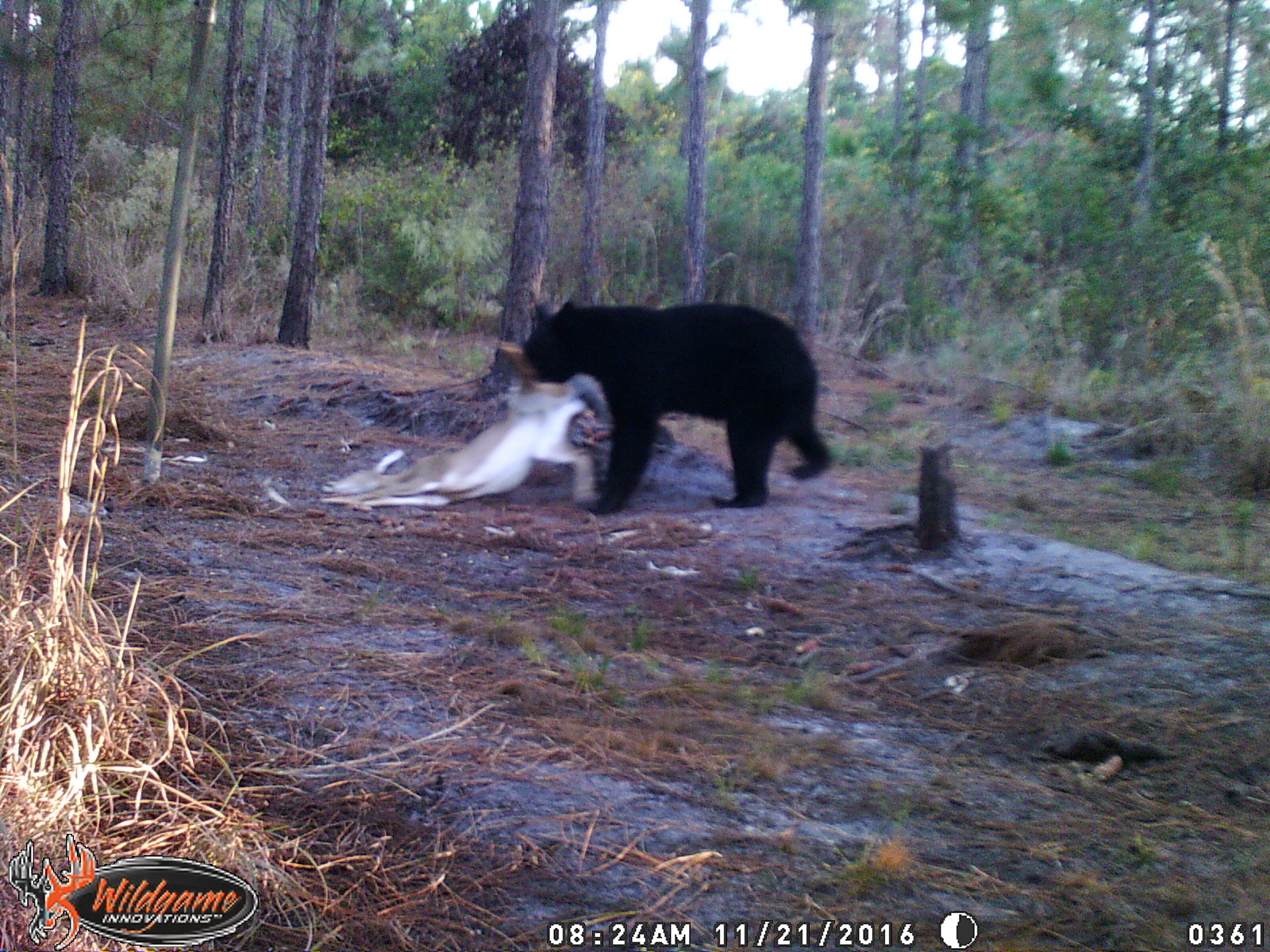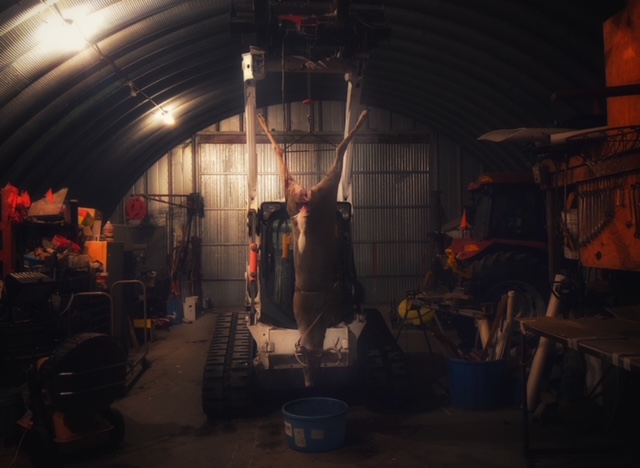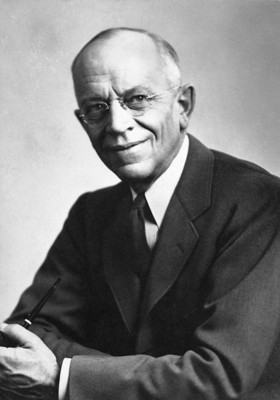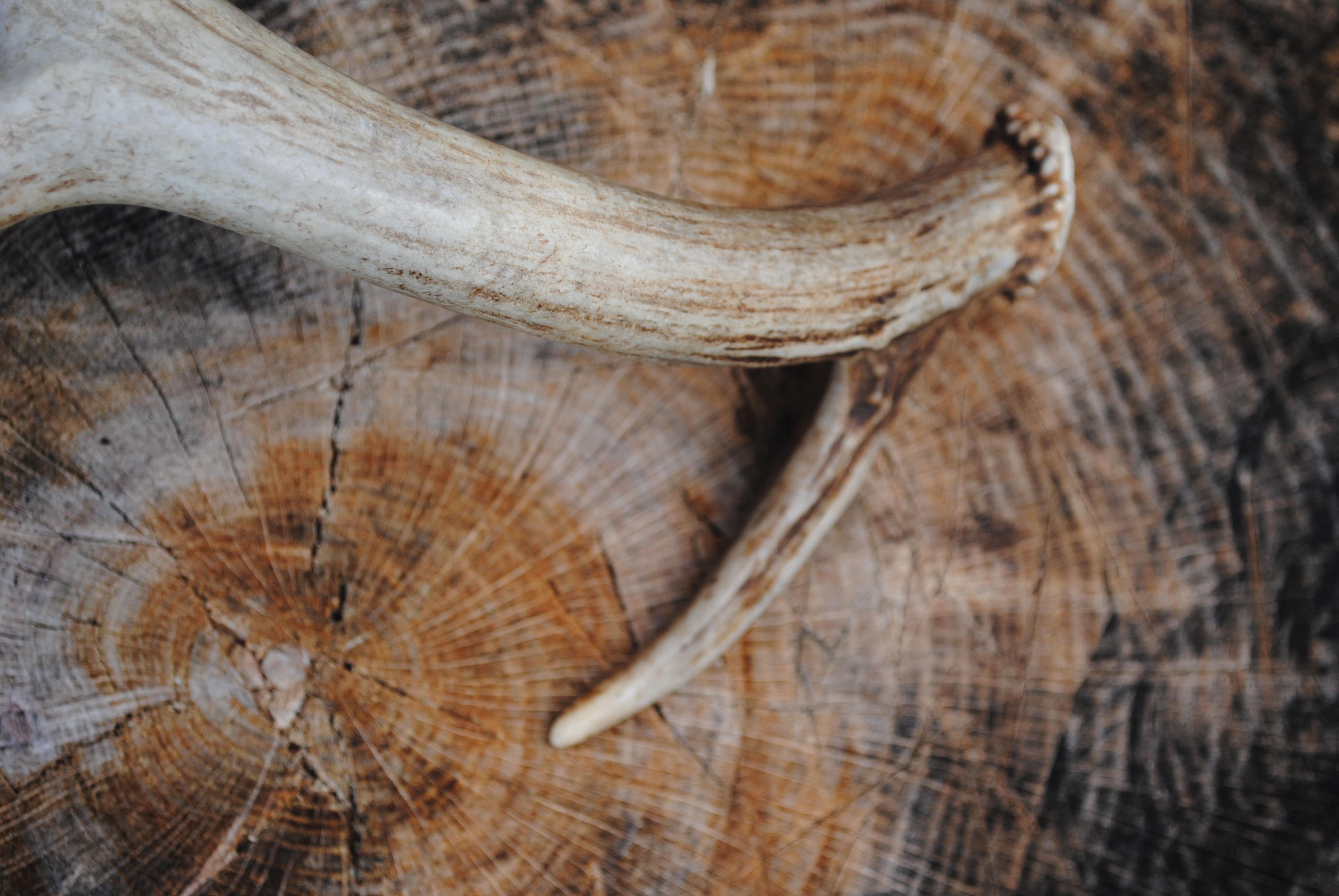Most people pay little attention to history. They know the big battles, big issues, and big names. Bunker Hill. Slavery. Eisenhower. As they skim the peaks, other details fade from view. We see a few recurring themes and tend to focus on the present, but not so much on how we got here.
As hunters we aren’t much different. We understand the effect of market hunting on the American bison and the passenger pigeon. We recognize certain luminaries who advocate for hunting. Roosevelt. Bear. Nugent. But we focus more on the here and now. The battles of the past have faded from view.
When it comes to deer hunting history, however, some battles don’t fade. The names Leopold, Latham, and Alt are attached to wildlife biologists who were both behind the scenes and in front of the crowds, and they fought similar recurring battles in successive generations. These men fought the “deer wars,” and were casualties of those battles.
Gary Alt
Freshest in our minds is the name Gary Alt, who had deep roots in Pennsylvania. He earned his Ph.D. (1989) in Forest Resources Science at West Virginia University. His dissertation on the reproductive biology of bears and early growth and development of cubs established him as an expert in the field of black bears. He was hired by the Pennsylvania Game Commission (PGC) as the bear section leader and turned a declining bear population around, rapidly increasing their numbers, and he made the state a leader in black bear management.
Alt was a hero to bear hunters and happy leading the bear project, but Pennsylvania faced a bigger problem. Since the middle of the 20th century the deer herd had been going the opposite direction from bears. The exploding deer population through the ’60s, ’70s, ’80s and ’90s was degrading the forest habitat. Warnings echoed through the decades from as early as the 1930s: the deer population could not continue to grow without impacting the entire forest ecosystem.
Once Pennsylvania’s Board of Game Commissioners was convinced that deer were eating themselves and other species out of house and home and putting the entire system of game management at risk, they sought a new leader who could solve the deer crisis. Alt’s engaging personality, his effectiveness in communicating, and his credentials in turning around the bear program in the state made him the choice for a job that would end up destroying his popularity.

The job was no small challenge. Alt adopted as his mission the restoration of balanced forest ecology through better deer management. He developed a twin program of Herd Reduction (HR) and Antler Restrictions (AR) that would benefit all species, but could he sell it to hunters who were accustomed to larger and larger deer harvests? Reducing the deer population would be a hard pill for them to swallow, so Alt embarked on a speaking tour of the state, attempting to reach every hunter with a description of the problem and a solution they could accept. The promise of bigger bucks helped get buy-in from hunters, but many opposed herd reduction.
Pennsylvania had long been known as a state with a high deer population, but the deer tended to be small. The truth that the deer were small because they were young and plentiful, and they were overbrowsing the habitat. In most parts of the state hunters killed between 85% and 95% of the antlered bucks when they were wearing their first set of antlers. Few bucks ever got to grow up. And with a high deer population degrading the habitat, few deer got enough nutrition.
As Alt stood before crowds, in one hand he held up a yearling 4-point rack typical of what every hunter was accustomed to shooting. In the other hand he held up the rack of an older buck with eight strong points, and promised bigger bucks would be more common if hunters accepted his program because bucks would have better nutrition and they’d gain maturity.
Alt’s program was adopted by the PGC, but not without controversy. Some hunters who were accustomed to seeing 30, 40, 50 or more deer every opening day wanted to continue seeing high numbers, and the battle was on. In 2002, the first year of Herd Reduction, hunters killed a record 517,529 deer, and high antlerless allocations continued in the following years. As the deer population declined, the habitat rebounded and the bucks got bigger.
The Antler Restriction requirement was a point restriction, which varied in different parts of the state depending on nutrition and antler genetics. Spike bucks and Y-bucks were no longer legal except for junior hunters, so most young bucks survived their first season with antlers and the average age of bucks began to rise.
Within a few years hunters were killing bigger, older bucks. The breeding ecology of the deer herd also improved. With fewer does to compete for, the bucks could breed most of them during their first estrus cycle, so the spring fawn drop would happen in a smaller window of time, and the lack of successive fawn drops reduced bear and coyote predation. Deer would be in better condition at winter’s end because the forest provided more food for fewer deer.
Was Alt’s program was a success? One indicator is that Pennsylvania taxidermists are busy mounting more mature bucks than ever before. But not everyone was happy. Alt stepped into a high-pressure situation and it took a toll. Hunters wanting a high deer population brought pressure on the PGC and by the end of 2004 Alt resigned, doubting the PGC would continue to support his policies even though they were demonstrably successful.
Roger Latham
Alt wasn’t the first to risk his career over the deer problem. Fifty years earlier Roger M. Latham had been the Game Commission’s Wildlife Research Division Chief, which included the job of deer biologist. Latham entered the scene at a time when much of the state’s forest, especially in the northcentral region, was in a regeneration stage, which gave plenty of cover and food for deer. As the timber reached pole stage, deer had stripped the forest floor of ground cover. Habitat for ground-dwelling species was destroyed, and without adequate browse deer were dying of starvation in the winter.
Latham’s research showed that small antlers were abnormal. Spikes and four points appear more often where deer range lacks high-quality food because it is heavily overbrowsed.
Like Alt 50 years later, Latham explained the problem to hunters. He authored an article in the March 1953 issue of “Pennsylvania Game News” titled “Too Many, Too Long!” He said, “deer have become victims of their own appetites,” partly because of an overemphasis on bucks by the PGC, and partly because the effort to build up the herd by protecting does lasted too long. The other side of the story was that hunters stood strongly against shooting does.
Latham wrote that in the north central counties of McKean, Potter, Elk, Cameron and Clinton, “Last year an estimated 4,500 deer starved in these counties and provided an insight into things to come.” He added, “Much of Pennsylvania’s deer range is now a desert — a forest desert with rotting bones of starved deer.”
Latham concluded the bold article by saying, “Deer hunting deteriorated into a meat slaughter during the last 20 years. Perhaps in the future it will be regarded more for its greatest value — recreation. Most hunters aren’t half as hungary [sic] for venison as they are for good wholesome sport. The opportunity to partake in the many pleasures offered by the great out-of-doors and the companionship of fellow sportsmen is, after all, our real goal. We can buy meat in the markets, but we cannot buy pleasant experiences and memories.”

“Too Many. Too Long!” wasn’t Latham’s first effort to sound the alarm on the high deer densities. Three years earlier he convinced the PGC to publish a special issue of “Pennsylvania Game News.” Latham wrote the entire 48-page issue on “Pennsylvania’s Deer Problem.” He described the rapid growth of the deer herd in the teens and twenties, doubling in the span of about three to four years. He used an old story as an analogy, comparing the deer herd in its habitat to a man stuffing gold coins into a bag. The seams of the bag were bursting, and the gold was spilling out. “Has not the Game Commission warned repeatedly for the past twenty years that the bag contained more than it could safely hold? Have not the seams begun to break and the gold pieces started to trickle through (winter mortality)? And is there not imminent danger that the whole bottom may fall out if some of the pieces are not removed and the strain relieved?”
Rather than taking out some of the gold coins and repairing the bag, hunters wanted to stuff the bag with more gold. Latham’s fear was that the hunters would be left “holding the bag” (ruined habitat) and lose the deer (the gold pieces).
The Game Commission fired Latham in 1957 and he turned to journalism to preach wildlife science. As the influential outdoor editor at the “Pittsburgh Press,” his writings there had no narrow focus. His first column (August 18, 1957) introduced himself to his readers, announcing his plan to cover every hunting, fishing, boating and camping subject. He continued until his untimely death in 1979 from an accident while photographing wildlife in Switzerland.
Aldo Leopold
Pennsylvania’s Latham had taken up the torch for better deer management just a few years after another luminary in wildlife biology had died. Latham was no doubt influenced by Aldo Leopold, a biologist from Wisconsin, who also saw the dangers of too many deer.
Leopold’s career was more varied than that of Alt or Latham, both of whom worked primarily in Pennsylvania. From 1909 to 1924, Leopold served with the U. S. Forest Service in New Mexico where he hunted and killed bears, wolves and mountain lions to protect livestock from predation. In 1924 he accepted a transfer to the U.S. Forest Products Laboratory in Madison, Wisconsin, and in 1933 was appointed Professor of Game Management at the University of Wisconsin, the first such professorship in the United States. In his book, “Game Management” (1933), he defined the science of wildlife management as “the art of making land produce sustained annual crops of wild game for recreational use.”

Leopold is more famous, however, for “A Sand County Almanac” (published posthumously in 1949), in which he developed the concepts of “thinking like a mountain” and “the land ethic.” It became an inspirational text for the environmentalist movement. Leopold died in 1948, suffering a heart attack while battling a wildfire on a neighbor’s land.
Leopold’s star burns brightly in the expanse of wildlife biologists. As an early warrior in the field, his work was groundbreaking and won’t be forgotten, but his basic philosophy evolved into subjectivism and was outside the realm of science. Some today refer to his outlook as “religious naturalism,” which looks on the natural world with a kind of religious devotion.
What did Leopold’s life and work have to do with deer? First, Leopold was a hunter, and an associate member of the Boone and Crockett Club, though he opposed Theodore Roosevelt’s more utilitarian concept of conservation. Leopold advocated for more wilderness without the presence of people.
Leopold learned from the Kaibab National Forest in New Mexico that reducing the predator population resulted in an overpopulation of mule deer and degradation of the habitat, which led to boom and bust — dramatic overpopulation of deer followed by disastrous decline. The lesson of the Kaibab became a classic study in wildlife management, but questions about methodology arose decades later, including ways wildlife populations were estimated. As a study in predator-prey balance, the Kaibab example disappeared from wildlife science textbooks in the 1970s.
Leopold became one of six board members of the Wisconsin Conservation Commission. Based on what he learned from the Kaibab he was instrumental in the decision to begin harvesting young bucks and does in 1943. Opponents of his plan were many. Leopold’s biographer Curt Meine noted that shooting does “was considered heresy,” and the 1943 firearms deer season became known as the “Slaughter of ’43.” From then until his death in 1948, hunters viewed Leopold with animosity. According to Meine, this experience influenced the philosophy behind Leopold’s conservation classic, “A Sand County Almanac.”
The Future
As some of the biggest names in the history of deer management, Leopold, Latham and Alt had similar outlooks and similar outcomes. All three saw that deer, the driving species in funding wildlife management in America, could easily pose a danger to the habitat, and all three men finished their careers as deer managers early, abruptly, and at great personal cost.
But what about the future? In 1969, between the time of Latham and Alt, the concept of “keystone species” was developed in the work of zoologist Robert T. Paine. The keystone concept is defined by its ecological effect cascading through other species in a shared habitat. It overlaps with other new concepts including flagship species, indicator species, umbrella species and focal species. These concepts will drive wildlife science in the future, broadening and complicating conservation issues.
Deer, primarily whitetails, have been at the heart of the hunting community and the economic driver of hunting and wildlife management through the 20th century. At the same time, from the beginning of Leopold’s career in 1909 to today, the world’s human population has grown from less than 2 billion to nearly 8 billion in 2020. White-tailed deer and deer management will continue to be at the heart of the battle to save wildlife from a constantly encroaching human population.
Leopold, Latham and Alt were all deer hunters, and enormously friendly to the interests of fellow hunters. As hunters decline in numbers and in political influence, whoever is next in line to do battle in the deer wars is less likely to be a deer hunter, and may be less friendly to us.
— Steve Sorensen, AKA “The Everyday Hunter®,” is a longtime contributor to Deer & Deer Hunting, and speaks frequently at sportsman’s dinners.
Sources:
Alt, Gary. Email response to Steve Sorensen.
April 11, 2022.
Kosak, Joe, 100 Years of Wildlife Conservation, 233 pages. The Pennsylvania Game Commission, 1995.
Latham, Roger, “Too Many. Too Long!” Pennsylvania Game News, Vol. XXIV, No. 2, February, 1953, pages 4-7.
McCaffery, Keith R., A Century of Deer Management in Wisconsin. https://buffalo.extension.wisc.edu , Accessed online April 11, 2022.
Jenkins, Ann, A Tribute to Roger Latham, 240 pages. Privately published, 2009.
Frye, Bob, Deer Wars: Science, Tradition, and the Battle Over Managing Whitetails in Pennsylvania, 310 pages. The Pennsylvania State University, 2006.
Binkley, Dan, et. al. Was Aldo Leopold Right about the Kaibab Deer Herd? Article in Ecosystems, March 2006. Accessed online at www.researchgate.net, April 11, 2022.
D+DH In-Depth is our premium, comprehensive corner on America’s No. 1 game animal. In this graduate-level course, we’ll teach you about deer biology, behavior, and ultimately, how to become a better hunter. Get articles sent to your inbox each time they go live by signing up here!


